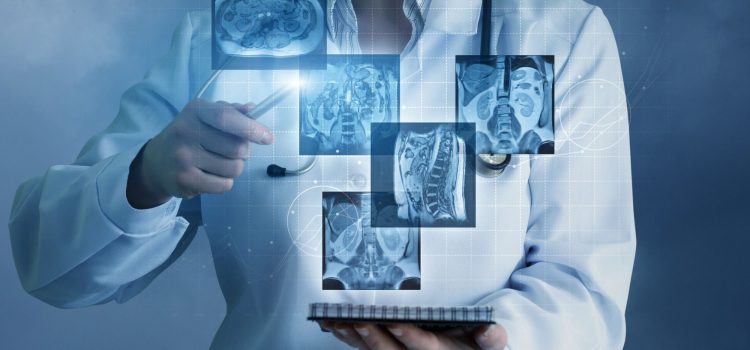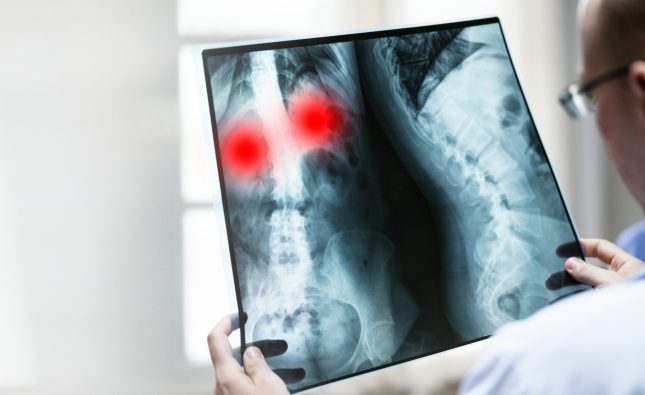
The Magic of AI in Medical Imaging
The advent of AI medical imaging has been a game-changer in the healthcare sector, significantly improving diagnostic accuracy and workflow efficiency. This technology has revolutionized the way radiology departments operate, paving the way for a new era in healthcare technology.
AI medical imaging is a product of two cutting-edge technologies: deep learning and machine learning. These two technologies are subsets of artificial intelligence, and they are responsible for the significant strides we are witnessing in the medical field today.
Deep learning, a type of machine learning, involves training a computer to recognize patterns and make decisions based on those patterns. In the context of healthcare, deep learning can be trained to recognize anomalies in medical images, such as tumors or fractures. This technology has significantly improved the accuracy of diagnoses, reducing the chances of human error and leading to better patient outcomes.
Machine learning, on the other hand, involves teaching a computer to learn from and make decisions based on data. In the realm of medical imaging, machine learning algorithms are used to analyze images and detect abnormalities that may not be visible to the naked eye. This has significantly improved the diagnostic accuracy of medical imaging, leading to earlier detection of diseases and improved patient outcomes.
The integration of AI in medical imaging has also led to significant improvements in workflow efficiency. Radiologists are now able to analyze images more quickly and accurately, reducing the time it takes to diagnose a patient and begin treatment. This not only improves the patient’s chances of recovery but also reduces the workload on the hospital staff, leading to more efficient operations.
AI medical imaging is a shining example of how healthcare technology can improve patient outcomes. By increasing diagnostic accuracy and workflow efficiency, this technology is helping to save lives and improve the quality of care patients receive.
But the magic of AI in medical imaging doesn’t stop there. As the technology continues to evolve, we can expect to see even more improvements in the way medical images are analyzed and interpreted. This will not only lead to better patient outcomes but also pave the way for new discoveries in the medical field.
In a nutshell, the integration of AI in medical imaging is a significant advancement in healthcare technology. It has revolutionized the field of radiology, improving diagnostic accuracy and workflow efficiency, and leading to better patient outcomes. As we continue to explore the possibilities of this technology, we can look forward to a future where AI plays an even more integral role in healthcare.

How AI Improves Diagnostic Accuracy
So, how does AI actually help with diagnosis? Well, AI uses something called machine learning, which is a type of deep learning. It’s trained on loads of medical images and learns to spot patterns and abnormalities that might be hard for us humans to see. For example, it’s really good at finding early signs of cancer in mammograms and CT scans. It’s so good, in fact, that it can sometimes do a better job than experienced radiologists.
The cool thing about AI is that it can also measure things like tumor sizes and track how they change over time. This is really important for planning treatments and keeping an eye on how a patient is doing.
AI Makes Workflows More Efficient
AI isn’t just about diagnosis though. It’s also helping to make the whole process more efficient. It can do routine tasks like image segmentation, annotation, and initial screening. This means that radiologists can focus on the more complex cases. Plus, it reduces the risk of burnout, which is a big issue in the medical profession.
In emergency situations, AI can prioritize the most critical cases. This ensures that patients who need urgent attention get it quickly. AI can also help to generate preliminary reports, speeding up the diagnostic process.
Benefits:
– Improves diagnostic accuracy
– Streamlines workflow and reduces workload
– Provides quantitative assessments for better treatment planning
– Prioritizes critical cases for timely attention
AI’s Role in Different Medical Fields
AI is being used in lots of different areas of medicine, like cardiology, neurology, orthopedics, and ophthalmology. It’s helping to detect heart diseases, diagnose conditions like Alzheimer’s disease, spot fractures and joint abnormalities, and even detect eye conditions that could lead to vision loss.
Overcoming Challenges and Ethical Considerations
Of course, like any new technology, there are some challenges and ethical considerations to think about. For example, the data that AI is trained on needs to be diverse to make sure it works well for different patient populations. And because AI can sometimes be a bit of a “black box”, researchers are working on ways to make it more transparent.
There are also important ethical issues around patient privacy and data security. We need to make sure that all this sensitive patient data is being handled responsibly and in line with regulations.
The Exciting Future of AI in Medical Imaging
The future of AI in medical imaging is looking really exciting. There are new technologies on the horizon that will allow AI to be trained on decentralized data sources, which will help protect patient privacy. Plus, the combination of AI with other technologies like augmented reality (AR) and virtual reality (VR) is opening up new possibilities for visualizing medical images.
In conclusion, AI is transforming healthcare by making diagnosis more accurate, improving workflow efficiency, and expanding the use of medical imaging in different fields. While there are challenges to overcome and ethical issues to consider, the benefits of AI in medical imaging are clear. As technology continues to evolve, AI will play an increasingly important role in improving patient care and advancing medical knowledge. The journey of AI in medical imaging is just beginning, and the future holds exciting possibilities for this groundbreaking technology.










